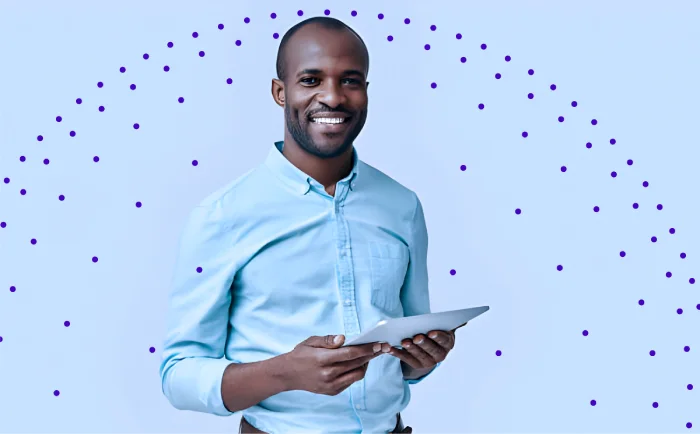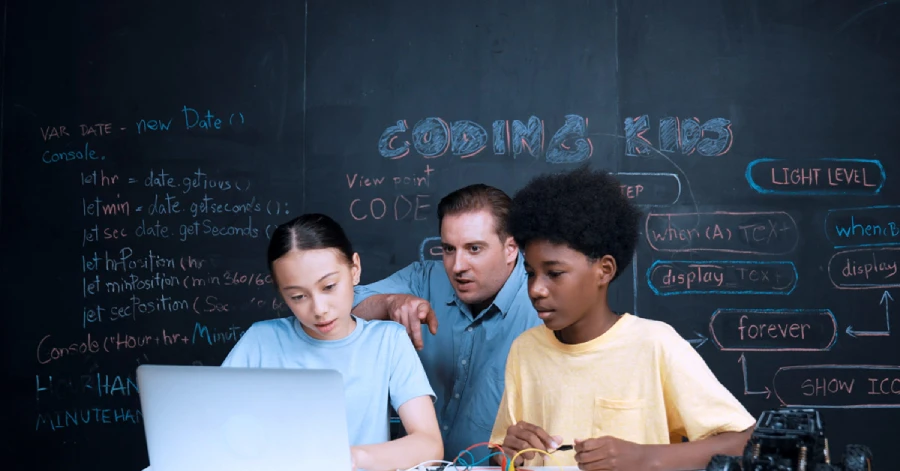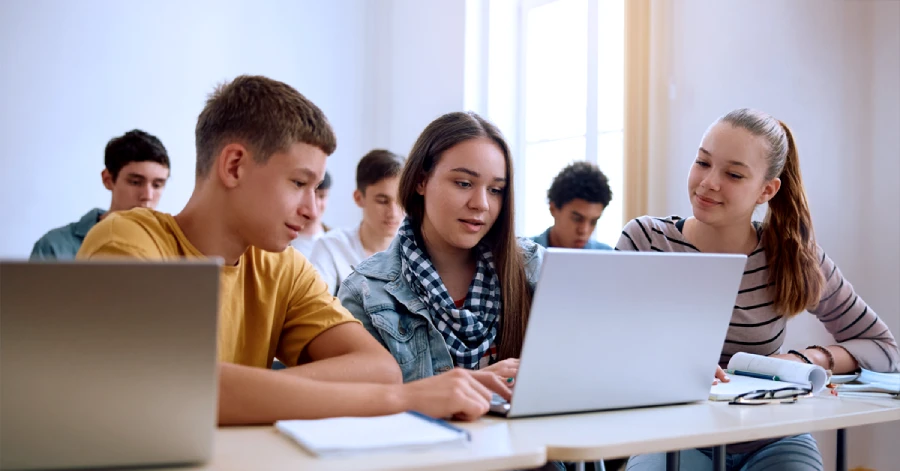Why EdTech Innovation Falls Short and What Can We Do About It?
- Published on: June 19, 2025
- |
- Updated on: August 7, 2025
- |
- Reading Time: 6 mins
- |
-
Views
- |
You’ve probably heard this before: “This is a game-changer.” In education, as in much of life, some variant of this phrase is often said about every new platform, every new application, and every new tool.
But real change in learning does not come from mere hype or trends or fashion; it comes from strategy. In the absence of strategic scaffolding and support, many education initiatives have a brutally short shelf life. They can be frankly Hobbesian.
This article covers our discussion of this very topic with Dr. Annalies Corbin, CEO of the PAST Foundation. “We threw everything we had at the wall,” Dr. Corbin said of the pandemic-era measures to save education. When asked, “Why do you think innovation of that sort in education so often falls short of real change?” Her answer was simple and sharp: time.
But the problem wasn’t the effort; that was Herculean. The problem was that people were deprived of the time it takes to build a strategy and sustain the efforts supporting or stemming from it.
Real change in education depends on time dedicated to strategic innovation, where thoughtful ideas are nurtured, tested, and – to borrow a phrase – built to last.
Common Challenge: Band-Aids Over Strategy
Education is often forced to implement innovation like a Band-Aid or a tourniquet (choose your own temporary medical intervention analogy here…). Federal funding comes in short 2 to 3-year cycles, and with it, a new fix. But these cycles are rarely long enough to support real cultural or systems-level change. As a result, institutions keep dropping new initiatives on top of old ones that are decaying in place without addressing the root issues that have prevented success in the first place.
The biggest challenge? Mistaking the arrival of innovation for the implementation of it.
A new tool is not a strategy. And without taking time to plan, test, iterate, and develop cultural buy-in, the tool won’t survive through to the next funding cycle.
And educators know this. As Dr. Annalies Corbin shared, many teachers have been through enough waves of “the next big thing” that they’ve stopped investing emotionally or intellectually. When that kind of cynicism sets in, it doesn’t matter how good the tool is. Without strategic cultural change, nothing sticks.
Going from Fear to Fluency with AI
AI is today’s internet: misunderstood, mistrusted, and here to stay. We’ve been here before. “There’s a bit of déjà vu,” Dr. Annalies Corbin said, recalling the early panic around the internet in classrooms.
Today, AI is triggering similar fears: that learners will cheat, that the tech isn’t safe, that it’s too powerful. But just like the internet, which reshaped the very world it entered, AI is ultimately a tool to be harnessed.
And the real question is, what can that tool best be used for?
True AI literacy isn’t about either banning or blindly adopting. It’s teaching learners how to ask great questions, vet information, and draw conclusions – the very skills we’re hoping they develop as students.
For educators, AI opens a whole world of support.
But this kind of shift won’t happen by chance. It needs support, trust, and time to build confidence. Once that’s in place, AI can become a powerful partner in the classroom.
5 Elements to Make EdTech Innovation Stick
After years of research, Dr. Annalies Corbin found a pattern: there are five core features that showed up consistently in the programs that endured. These are the key ingredients for any school or district serious about creating sustainable change.
1. Student Agency
When learners have voice and choice, they don’t just show up; they engage. But “student agency” goes beyond picking from a list of potentially resonant projects. At its core, it’s about co-designing learning pathways with the learners themselves. When that happens, engagement becomes intrinsic, not forced. It also means institutions trust learners enough to let them try, fail, and try again.
Learners need to feel a sense of ownership. That might mean helping define goals for a unit, choosing how to demonstrate understanding, or proposing their own project ideas. When learners get to shape how they learn, they’re more likely to stay motivated, challenge themselves, and take pride in their growth.
2. Cultural Relevance
Cultural relevance means knowing who your learners are. Make sure your content and experiences reflect their lives. If learners can’t see themselves in the material and coursework they’re engaging, they’ll tune out, especially as they get older. But when learning feels personalized and meaningful, they stay engaged. Pair that with a student agency, and it becomes a recipe for relevance, which ensures engagement.
3. Mastery-Based Learning
This one scares systems the most. Mastery-based learning means learners move forward when they understand the content and not when the calendar says it’s time.
It means allowing for time and depth, recognizing that learning isn’t linear and mastery doesn’t hold to a particular schedule. In traditional models, if a student doesn’t get the lesson on Tuesday at 2:00 PM, they nevertheless move onto something new by Wednesday.. This disconnect does not allow for learning that can be synthesized down the road.
Mastery-based systems create space for practice, revision, and reflection. They say, it’s okay to take more time; what matters is that learners get it.
4. Transdisciplinary Approaches
Real learning can’t be approached like books with different subject titles. In the world around us, math, science, history, and language don’t occupy discrete spaces. They overlap, they coexist, they inform and relate to one another. Real problems in the real world require multiple disciplines to solve them.
Transdisciplinary learning asks educators to teach in context. This means a unit on climate change might include environmental science, persuasive writing, policy analysis, and math equations in one. It’s messier, yes. But it’s also how problems are actually solved in the real world. And when learners work across disciplines, they build critical thinking and collaboration skills they’ll need long after school.
5. Problem-Based Learning
This is the toughest and the most transformational. Problem-based learning (PBL) is the high end of the
hands-on learning spectrum. It asks learners to work on real-world problems that don’t have one right answer.
Institutions often resist this because it looks different. It feels less controlled. And at first, learners struggle because they’re used to being told what to do. But once they adjust, they thrive. “They will outperform learners in traditional classrooms every single time,” Dr. Annalies Corbin said.
PBL also allows educators to bring their full selves to the work. Teachers can lead with passion, pull in community partners, and help learners see learning as something alive and meaningful.
EdTech Innovation Starts with the Low-Hanging Fruit
If education innovation feels overwhelming, you are worrying about the right things. Instead of throwing the first idea out there, starting with a well-thought-out strategy is a good way to go.
The good news? Institutions don’t have to start by reinventing the wheel. One of the most accessible entry points is mastery-based learning at the classroom level. Despite the misconception that it demands sweeping policy reform, it doesn’t. Any educator can begin shifting focus from grades to growth, giving learners time to dig deeper, revise, and truly master content. It’s a change in mindset, not legislation.
Looking ahead, the real transformation lies in embracing problem-based learning, even though it’s the hardest shift to make. The reason? It upends traditional routines. But as Dr. Annalies Corbin makes clear, once learners adapt to this approach, they outperform peers in conventional systems every time. That temporary dip in familiarity is worth the long-term payoff.
Institutions that adopt even one of the five lasting innovation elements—student agency, cultural relevance, mastery-based learning, transdisciplinary learning, or problem-based education—are already on a better trajectory. Start with what’s practical today. Build the muscle for what’s visionary tomorrow. And above all, never let school get in the way of real learning.
The future of education isn’t locked inside a tool. It lives in strategy, culture, and relationships. The good news is that we already possess the necessary resources to start. We already have what we need to begin.
FAQs
Start with a micro‑pilot in one grade or subject: let teachers co‑design flexible pacing checkpoints, provide common revision rubrics, and compare growth data to the traditional track. Visible student gains and the option to refine before expansion—turn skeptics into advocates while keeping accountability intact.
Embed a “local lens” layer: invite community members or student leaders to curate short case studies, examples, or media clips that mirror learners’ lived realities. Tag those assets in the LMS so any teacher can swap them into current lessons—small lift, big resonance.
We can measure student agency based on these three observable indicators:
1. The percentage of units where learners choose their demonstration format.
2. Frequency of student‑generated learning goals logged in the LMS.
3. The post‑unit reflections were scored with a voice‑choice‑ownership rubric.
Baseline, set quarterly targets, and report alongside achievement data.
Use a sandbox sprint: a 90‑minute session where teachers bring an upcoming lesson, experiment with AI prompts to draft exemplars or scaffolds, then peer‑review outputs with an “accuracy & bias” checklist. Seeing time saved—and controls applied—rapidly converts apprehension into informed use.

Get In Touch
Reach out to our team with your question and our representatives will get back to you within 24 working hours.


